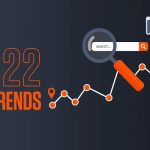Introduction
In the ever-evolving landscape of digital marketing, search engine optimization (SEO) continues to be a crucial factor in determining the online visibility and success of a website. While many focus on content creation and link building, one aspect often overlooked is technical SEO.
Technical SEO refers to the optimization of the website’s underlying structure & framework so that its visibility on search engines and user experience is enhanced. It involves various strategies for better performance. In this article, we will delve into the world of technical SEO and explore its significance in driving organic traffic and enhancing website performance.
Also Read: What is the most important Google Ranking factor?
Understanding Technical SEO
Technical SEO refers to the optimization of the technical aspects of a website to improve its visibility and performance in search engine rankings. It involves implementing various technical strategies and best practices to ensure that search engines can efficiently crawl, index, and understand the content of a website.
While content and backlinks are essential for SEO, technical SEO focuses on the underlying infrastructure and technical elements of a website. By optimizing these technical aspects, website owners can enhance their website’s visibility, organic traffic, and overall user experience.
Technical SEO includes optimization of relevant technologies such as:
- Caching server configurations
- Images and their file types
- Headers, footers, and other metadata
- HTML structure and content markup
- Usability of site architecture and website content
- User experience and navigation
- Search engine optimization (SEO)
- Security of website content
Key Components of Technical SEO
By addressing technical issues and improving the website’s infrastructure, technical SEO aims to enhance the user experience, increase organic traffic, and ultimately drive better search engine rankings. It is an ongoing process that requires regular monitoring, optimization, and adaptable to keep up with evolving search engine algorithms and user expectations.
To gain a better understanding of technical SEO, let’s explore some key components and techniques involved:
Website Speed and Performance:
Website loading speed is a critical factor for both search engines and users. Optimizing image sizes, leveraging the browser caching, and minifying code are among the techniques used to improve website speed and performance.
Mobile Friendliness:
Mobile devices have grown in popularity which has led to search engines giving priority to websites optimized for mobile viewing. This makes it easier for users to access content on the go. Employing responsive design, optimizing for mobile screen sizes, and ensuring easy navigation on handheld devices are vital for technical SEO.
Site Structure and URL Optimization:
A well-organized site structure improves both user experience and search engine Crawlability. Creating a logical hierarchy, organizing content into categories and subcategories, and utilizing breadcrumb navigation are techniques that enhance site structure. Additionally, creating SEO-friendly URLs with relevant keywords and avoiding dynamic parameters can improve search engine visibility.
XML Sitemaps and Robots.txt:
XML sitemaps provide search engines with a blueprint of a website’s structure and help them understand the relationship between different pages. Including all essential pages in the XML sitemap ensures they are crawled and indexed properly. The robots.txt file essentially tells search engine bots which webpages should be indexed and which ones should not, allowing you to control the visibility of specific content.
Also Read: What Is a Sitemap and how it will useful for SEO
Canonicalization and Redirects:
Duplicate content can harm search engine rankings. Canonical tags are necessary when similar (but not identical) pages exist on a website. They help search engines understand which page is the original version and should be indexed; the other versions are considered ‘duplicates’.
This helps to ensure that no duplicate content is indexed, which can result in penalty points from search engines. Additionally, implementing 301 redirects for broken or moved pages ensures that users and search engines are redirected to the correct and updated page, preserving link equity and avoiding errors.
Enhancing Indexing and Crawling
Structured Data Markup:
Structured data markup is a technique to help search engines understand and interpret the content of a webpage better. It involves adding extra information which helps the search engine in providing relevant results to the user.
Adding structured data markup to your website is a great way to boost its visibility on search engine results pages. This markup provides context and additional information about the content, leading to rich search results, including snippets, reviews, and breadcrumbs.
It uses standardized formats, such as Schema.org, to mark up elements like products, reviews, events, and more. Implementing structured data markup helps search engines understand the context and meaning of content, leading to enhanced search results, such as rich snippets, knowledge panels, and other rich media.
Indexing and Crawling Optimization:
Proper indexing and crawling are fundamental for search engines to discover and understand website content. This includes optimizing the robots.txt file, managing URL parameters, ensuring internal linking between pages, and resolving crawl errors and broken links. It’s important to create a clear and a logical link structure within the website and use descriptive anchor text to guide search engine bots through relevant pages.
URL Parameters:
Utilizing URL parameters to dynamically generate content can result in crawl inefficiencies. Configuring parameters in Google Search Console and using the rel=canonical tag helps manage URL parameter crawling, ensuring search engine bots focus on essential pages.
Internal Linking:
Proper internal linking helps search engine bots discover and navigate through a website. Creating a logical link structure, utilizing anchor text strategically, and providing related links within content can significantly improve crawling and indexing.
Also Read: Why is Link Building Important for SEO?
Technical SEO Audits and Tools
Performing periodic technical SEO audits is essential to detect & address website issues that may limit its performance. This can be the difference between good and bad search engine rankings.. Various tools such as Google Search Console, Screaming Frog, Moz, and SEMrush can provide valuable insights into indexing, crawl errors, broken links, and other technical aspects. By leveraging these tools, website owners can make data-driven decisions and continually improve their technical SEO efforts.
The Future of Technical SEO
As search engines continue to evolve, technical SEO will remain a crucial aspect of website optimization. With the advent of artificial intelligence and voice search, website owners must adapt their technical SEO strategies to keep up with changing user behaviors and search engine algorithms. Embracing emerging technologies and staying updated with best practices will ensure websites maintain a competitive edge in the digital landscape.
Conclusion
It is essential for website success to include Technical SEO in any optimization tactic. This will guarantee a higher level of visibility for the website and produce more desirable results. By focusing on improving website speed, mobile-friendliness, site structure, indexing, and other technical elements, website owners can enhance their search engine rankings, attract more organic traffic, and deliver exceptional user experiences. Embracing the power of technical SEO and regularly auditing and optimizing your website will position you for long-term success in the ever-evolving digital world.

We are a team of enthusiastic people who want to share our experience, knowledge and enterprise with the world. We love what we do and we hope you will too!. We pride ourselves on being the global leader in developing Techspurblog as a technology blog, which can create original content.






